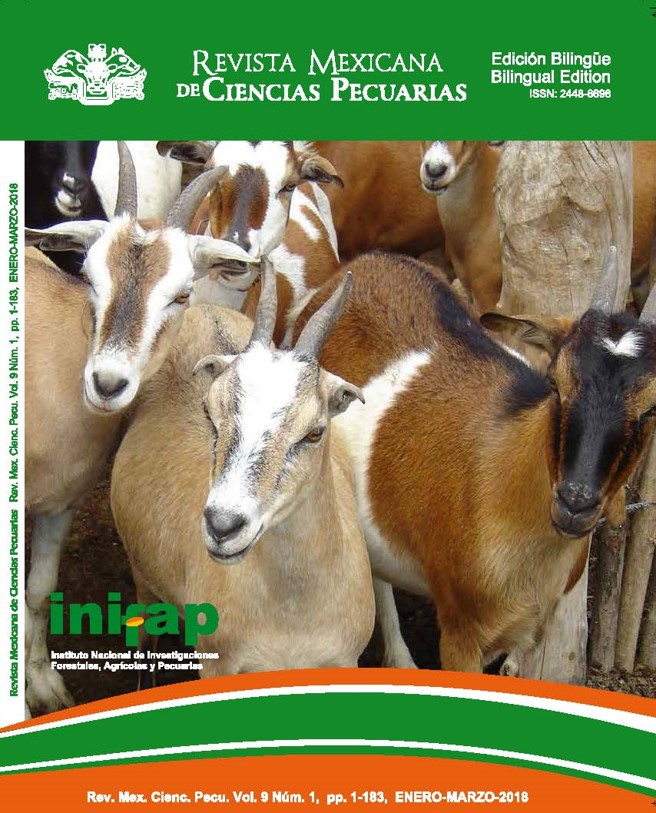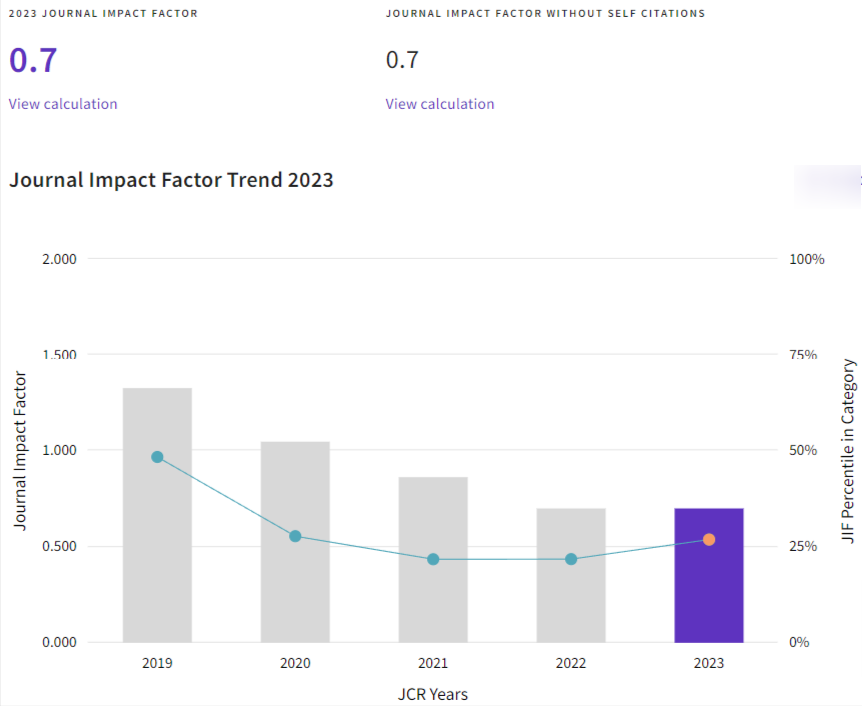Dynamics of adoption of good practices in honey production in the Peninsula of Yucatan, Mexico
DOI:
https://doi.org/10.22319/rmcp.v9i1.4366Keywords:
Agricultural extension, Beekeeping, Certification, Innovation, Safety.Abstract
The objectives were to analyse the changes in the adoption of good honey production practices (BPPM, in Spanish) in apicultural producers of the Yucatan Peninsula, Mexico, before and after the producers had received technical advice and training; as well as identifying factors that influence the adoption of such practices. A total of 31 BPPM were considered and grouped into seven categories, the BPPM adoption index (InABPPM, in Spanish) was figured up. Information from 8,074 beekeepers in two stages (baseline and final line), for the states of Yucatan (n= 3,840), Campeche (n= 3,525), and Quintana Roo (n= 709), was analysed. Beekeepers were classified by the number of hives they owned, in three groups: small (1-22, 24 %), medium (23-35, 27 %), and large (36-400, 49 %). The average InABPPM had a significant increase (P<0.01) of 16.8 % in a period 8 mo. Additionally, significant differences (P<0.01) were found in the categories of location and installation of apiary, apicultural health, harvesting, field staff, and cleaning and hygiene program. No significant differences were found for the categories of artificial feeding and materials for the hive protection and smoking (P>0.05). This study highlights the relevance of programs for managing and disseminating of BPPM to promote the beekeeping activity and access to the international market complying with the required quality standards. The results suggest promoting the adoption of process BPPM and later guide the investment of public support in those apiaries with better performance in terms of increasing in adoption levels.Downloads
References
-0SAGARPA. Miel. Atlas agroalimentario. Secretaría de Agricultura, Ganadería, Desarrollo Rural, Pesca y Alimentación (SAGARPA). 2016.
- Magaña MMA, Sanginés GJR, Lara y Lara P, Salazar BL de L, Leyva MCE. Competitividad y participación de la miel mexicana en el mercado mundial. Rev Mex Cienc Pecu 2017;8(1):43-52.
Martínez GEG, Pérez LH. La producción de miel en el trópico húmedo de México: avances y retos en la gestión de la innovación. Texcoco, Estado de México: Universidad Autónoma Chapingo–CIESTAAM. 2013.
Villanueva-Gutiérrez R, Echazarreta-González C, Roubik DW, Moguel-Ordóñez YB. Transgenic soybean pollen (Glycine max L.) in honey from the Yucatán peninsula, Mexico. Sci Rep 2014;4:4022.
SAGARPA, SENASICA, Coordinación General de Ganadería, Sistema Producto Apícola. Manual de buenas prácticas pecuarias en la producción de miel. Tercera ed. México, DF. Secretaría de Agricultura, Ganadería, Desarrollo Rural, Pesca y Alimentación (SAGARPA). Servicio Naciona de Sanidad, Inocuidad y Calidad Agroalimentaria (SENASICA). 2015.
Alfaro BRG, Gonzales AJA, Ortiz DJJ, Viera CFA, Burgos PAI, Martínez HE, et al. Caracterización palinológica de las mieles de la Península de Yucatán. Mérida, Yucatán: Universidad Autónoma de Yucatán; Comisión Nacional para el Conocimiento y Uso de la Biodiversidad. 2010.
Aguilar-Ávila J, Santoyo-Cortés VH, Muñoz-Rodríguez M, Aguilar-Gallegos N, Martínez-González EG. Agencias de gestión de la innovación para el desarrollo de proveedores en México. Compés LR, et al, editores. Redes de innovación y desarrollo local para el medio rural. Gobierno de España; Ministerio de Agricultura, Alimentación y Medio Ambiente; 2015:249–266.
Sagastume N, Obando M, Martínez M. Guía para la elaboración de estudios de adopción de tecnologías de manejo sostenible de suelos y agua. Primera ed. Tegucigalpa, Managua y San Salvador: PASOLAC, inter-cooperation, COSUDE; 2006.
Rogers EM. Diffusion of innovations. Fifth ed. New York, USA: Free Press; 2003.
Hartwich F, Monge PM, Ampuero RL, Soto JL. Knowledge management for agricultural innovation: lessons from networking efforts in the Bolivian Agricultural Technology System. Knowl Manag Dev J 2007;3(2):21-37.
Aguilar-Gallegos N, Martínez-González EG, Aguilar-Ávila J, Santoyo-Cortés H, Muñoz-Rodríguez M, García-Sánchez EI. Análisis de redes sociales para catalizar la innovación agrícola: de los vínculos directos a la integración y radialidad. Est Gerenciales 2016;32(140):197-207.
Aguilar-Gallegos N, Muñoz-Rodríguez M, Santoyo-Cortés H, Aguilar-Ávila J, Klerkx L. Information networks that generate economic value: A study on clusters of adopters of new or improved technologies and practices among oil palm growers in Mexico. Agricult Syst 2015;135:122-32.
Kilelu CW, Klerkx L, Leeuwis C. Unravelling the role of innovation platforms in supporting co-evolution of innovation: Contributions and tensions in a smallholder dairy development programme. Agricult Syst 2013;118:65-77.
Klerkx L, Aarts N, Leeuwis C. Adaptive management in agricultural innovation systems: The interactions between innovation networks and their environment. Agricult Syst 2010;103(6):390-400.
Jara-Rojas R, Bravo-Ureta BE, Díaz J. Adoption of water conservation practices: A socioeconomic analysis of small-scale farmers in Central Chile. Agricult Syst 2012;110:54-62.
Mariano MJ, Villano R, Fleming E. Factors influencing farmers’ adoption of modern rice technologies and good management practices in the Philippines. Agricult Syst 2012;110:41-53.
Güemes-Ricalde FJ, Villanueva-G R, Eaton KD. Honey production by the Mayans in the Yucatan peninsula. Bee World 2003;84(4):144-54.
Contreras-Escareño F, Armendáriz BP, Echazarreta CM, Arroyo JC, Macías-Macías JO, Tapia-González JM. Características y situación actual de la apicultura en las regiones Sur y Sureste de Jalisco, Mexico. Rev Mex Cienc Pecu 2013;4(3):387-398.
Muñoz RM, Aguilar ÁJ, Rendón MR, Altamirano CJR. Análisis de la dinámica de innovación en cadenas agroalimentarias. Texcoco, Estado de México: Universidad Autónoma Chapingo–CIESTAAM; 2007.
OCDE Organisation for Economic Co-operation and Development. Creating rural indicators for shaping territorial policy. OECD Organisation for Economic Co-operation and Development. 1994.
INEGI Instituto Nacional de Estadística y Geografía. Censo de población y vivienda. 2010.
Montgomery DC, Peck EA, Vinning GG. Introducción al análisis de regresión lineal. Segunda ed. México, D F: Compañia editorial continental; 2002.
SAS. SAS/STAT (R). User’s guide. Cary, N.C., USA: Statistical Analysis System; 2004.
Handschuch C, Wollni M, Villalobos P. Adoption of food safety and quality standards among Chilean raspberry producers - Do smallholders benefit?. Food Policy 2013;40:64-73.
Reardon T, Codron J-M, Busch L, Bingen J, Harris C. Global change in agrifood grades and standards: agribusiness strategic responses in developing countries. Int Food Agribus Manag Rev 1999;2(3-4):421-35.
Vélez IA, Espinosa GJA, Amaro GR, Arechavaleta VME. Tipología y caracterización de apicultores del estado de Morelos, México. Rev Mex Cienc Pecu 2016;7(4):507-24.
Reardon T, Barrett CB, Berdegué JA, Swinnen JFM. Agrifood industry transformation and small farmers in developing countries. World Dev 2009;37(11):1717-27.
Asfaw S, Mithöfer D, Waibel H. EU food safety standards, pesticide use and farm-level productivity: the case of high-value crops in Kenya. J Agric Econ 2009;60(3):645-667.
Hobbs J. Incentives for the adoption of good agricultural practices. Rome, Italy: Food and Agriculture Organization of the United Nations (FAO); 2007.
Girma J, Gardebroek C. The impact of contracts on organic honey producers’ incomes in southwestern Ethiopia. For Policy Econ 2015;50:259–68.
Wei G, Huang J, Yang J. Honey safety standards and its impacts on China’s honey export. J Integr Agric 2012;11(4):684–693.
Formato G, Smulders FJM. Risk management in primary apicultural production. Part 1: bee health and disease prevention and associated best practices. Vet Q 2011;31(1):29-47.
Giacobino A, Cagnolo NB, Merke J, Orellano E, Bertozzi E, Masciangelo G, et al. Risk factors associated with the presence of Varroa destructor in honey bee colonies from east-central Argentina. Prev Vet Med 2014;115(3-.4):280-287.
Mujuni A, Natukunda K, Kugonza DR. Factors affecting the adoption of beekeeping and associated technologies in Bushenyi District, Western Uganda. Livest Res Rural Dev 2012;24(8). http://www.lrd.org/lrrd24/8muju24133.htm. Accessed Apr 10, 2016.
Mattila HR, Otis GW. Influence of pollen diet in spring on development of honey bee (Hymenoptera: apidae) colonies. J Econ Entomol 2006;99(3):604-613.
Fechner DC, Moresi AL, Ruiz DJD, Pellerano RG, Vazquez FA. Multivariate classification of honeys from Corrientes (Argentina) according to geographical origin based on physicochemical properties. Food Biosci 2016;15:49-54.
Affognon HD, Kingori WS, Omondi AI, Diiro MG, Muriithi BW, Makau S, et al. Adoption of modern beekeeping and its impact on honey production in the former Mwingi District of Kenya: assessment using theory-based impact evaluation approach. Int J Trop Insect Sci 2015;35(2):96-102.
Adgaba N, Al-Ghamdi A, Shenkute AG, Ismaiel S, Al-Kahtani S, Tadess Y, et al. Socio-economic analysis of beekeeping and determinants of box hive technolgy adoption in the Kingdom of Saudi Arabia. J Anim Plant Sci 2014;24(6):1876-1884.
Downloads
Published
How to Cite
-
Abstract3161
-
PDF (Español)1374
-
XML (Español)999
Issue
Section
License

This work is licensed under a Creative Commons Attribution-NonCommercial-ShareAlike 4.0 International License.





